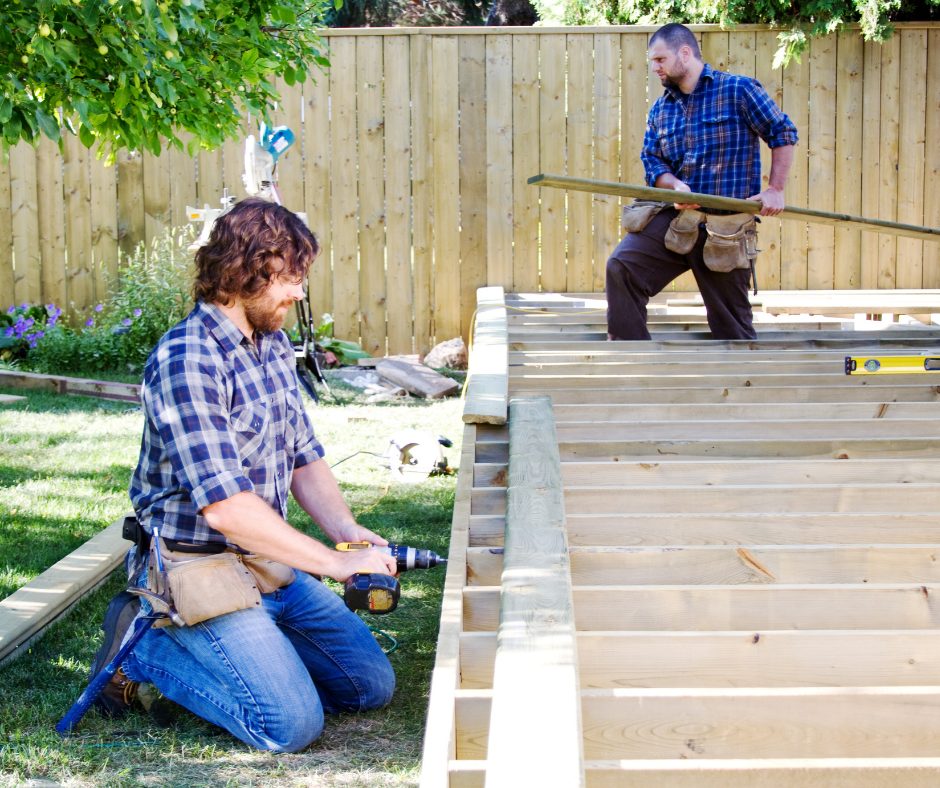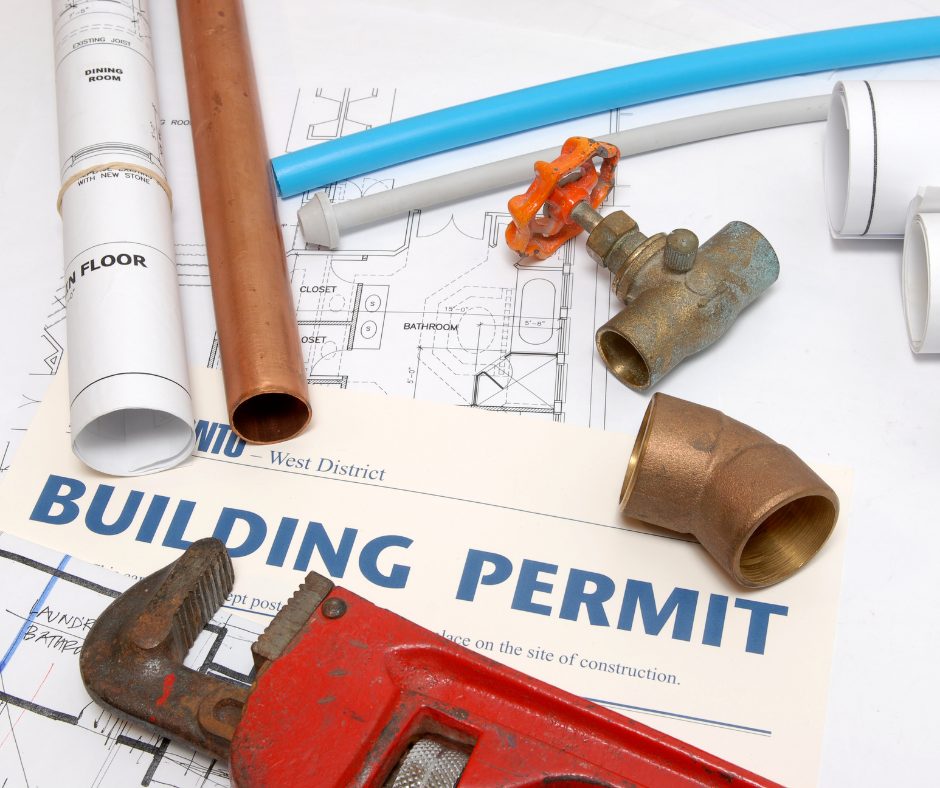When you’re looking to update or add to your home or property, you usually have a lot of say in how the project unfolds. However, you might also need a building permit from your city or county to move forward, but that isn’t universally true. Usually, it depends on the type of work you’re doing, but there can be other factors.
If you’re trying to find the answer to the question, “When do you need a building permit?” your best bet is to check with your local building authority. Laws and ordinances vary by location, so contacting your city or county officials or researching the rules online is best.
However, some projects almost universally require permits, while others typically don’t. Here’s a look at four projects that require permits, three projects that don’t, and three projects where it may depend.

4 Projects That Require Permits
1. Replacing Roof
If you’re installing a new roof (including removing and replacing an existing one), the answer to “Do I need a permit to replace my roof myself?” is “yes” in nearly all cases. You’ll also need a permit for new roofs if you use professionals.
In fact, you may need a permit for roof patches if the area is large enough. This is because roofs are critical parts of a building’s structure, and permits help ensure any repairs, replacements, or builds are done correctly.
2. Building Decks
Many people wonder, “Do you need a permit to build a deck?” If you’re one of them, the answer is commonly “yes.” Whether a deck is wood or made from a wood alternative, a permit is probably essential.
While the exact rules vary by location, many municipalities require permits for deck builds. That way, they can ensure the safety of the build, including conducting structural reviews and evaluating the ecological impact, if necessary.
3. Plumbing or Electrical

If you’re installing new pipes or electrical or performing specific updates that involve changes to your plumbing or electrical, permits are generally required. This is true even if the project is relatively small. For example, adding a single new electrical outlet typically requires a permit.
More extensive projects involving new or altered plumbing or electrical almost universally require permits. For instance, if you’re wondering, “Do I need a permit to add a bathroom in my house?” the answer is always “yes.”
This doesn’t mean you need a permit for everything that touches the electrical or plumbing systems. For example, the answer to “Do I need a permit to remodel my kitchen?” could depend on the kind of changes you’re making. If you aren’t moving or updating plumbing or electrical components and are mainly doing an aesthetic update, the answer may be “no.” However, you’ll want to confirm that with your local authority.
4. Adding or Removing a Wall
More often than not, if you’re removing or adding a wall – including placing sheetrock over pre-existing but uncovered framing – you’ll need a permit. Walls are part of the main structure, so permits are typically required to ensure you follow local building codes. Additionally, placing sheetrock over any existing structure means what lies below isn’t visible, so inspectors usually want to take a look in advance to make sure everything is correct before you move forward.
Generally speaking, the answer to “Do I need a permit to finish my basement?” is usually “yes” because it involves structural changes. However, even if you aren’t adding or removing walls or applying new sheetrock if you’re updating the electrical or plumbing in the basement, as mentioned above, permits are usually a necessity.
3 Projects That Don’t Require Permits
1. Adding a Patio

Usually, you can install a patio on grade without a permit. This includes concrete, paver, and tile patios. As long as it’s at grade level and no major soil movement is required for the project, permits typically aren’t a requirement.
It is important to note that certain patio upgrades may require permits. If you’re wondering, “Do I need a permit for a pergola?” the answer is commonly “yes” if the structure is considered permanent.
2. Stabilizing After an Incident
Generally speaking, if you need to move forward with a stabilization project after an incident, you can do so without a permit. For instance, if a wind storm starts detaching your deck, you can add supports to keep it from falling immediately and without a permit. That allows you to ensure safety quickly.
However, when you need to make permanent repairs, the situation changes. Then, a permit is required if the level of work or structure involved would necessitate one typically.
3. Updating Pure Aesthetics
In most cases, a project that only changes the aesthetics of a home doesn’t require permits. For example, painting or adding wallpaper can usually be done permit-free. Similarly, changing out your flooring, replacing a faucet (without changing the underlining plumbing), or switching out countertops don’t require permits.
3 Projects That Might Require a Permit
1. Building a Shed

While some projects either definitely require a permit or don’t, a few are a bit ambiguous. One prime example is the answer to “Do I need a permit to build a shed?”
Whether you need a permit depends on whether the shed is considered a permanent structure or a temporary one. Typically, if the shed is attached to a foundation, it’s deemed permanent. In that case, a permit is necessary. However, if the shed is designed to be relocated several times and isn’t affixed to the ground, it may classify as temporary. If that’s true, you typically don’t need a permit.
Check with your local building authority if you aren’t sure which side of the line your shed falls on. They’ll be able to discuss city or county ordinances with you, allowing you to figure out whether a permit for a shed is required.
2. Installing a Fence
If you’re wondering, “Do you need a permit to build a fence?” the answer may depend on where you live, the type of fence you’re installing, and where the fence is positioned on your property.
Some cities or counties do require permits for all fences. Others focus solely on permanent fences, such as those that require concrete to support the posts, allowing temporary ones to go up without a permit. As a result, you’ll need to check local law to see whether a permit for a fence is required.
3. Retaining Walls
Another project that may or may not require a permit is retaining walls. Retaining walls can alter water drainage and soil positioning, so cities might make permits mandatory to ensure your project won’t cause harm to the local ecosystem or neighboring properties. Usually, local ordinances outline when a permit is necessary.
Finishing a Project Without a Permit

If you wrap up a project without a permit that should have had one, the consequences can be severe. For example, if you’re wondering, “What happens if I finish my basement without a permit?” you may end up having to tear out all of the work. Additionally, you might face steep fines and, if you’re trying to sell, the odds that you’ll run into difficulties are high.
When you sell a property, you’re required to disclose major construction projects. If work is unpermitted, you might scare off buyers, including first-time buyers, anyone who plans on living in the property, or investors. They won’t know if the work was done safely and in accordance with local code or whether it will be able to remain in place after they purchase the property.
Plus, the buyer could face other penalties relating to the projects, such as having to pay for retroactive permits or dealing with back taxes relating to an inaccurate property value. There’s also a chance they won’t be able to get their homeowner’s insurance to cover the unpermitted project areas, or their lender may ask for the loan to be paid in full immediately because unpermitted work is present. As a result, they may decide that pursuing your property isn’t a smart move.




